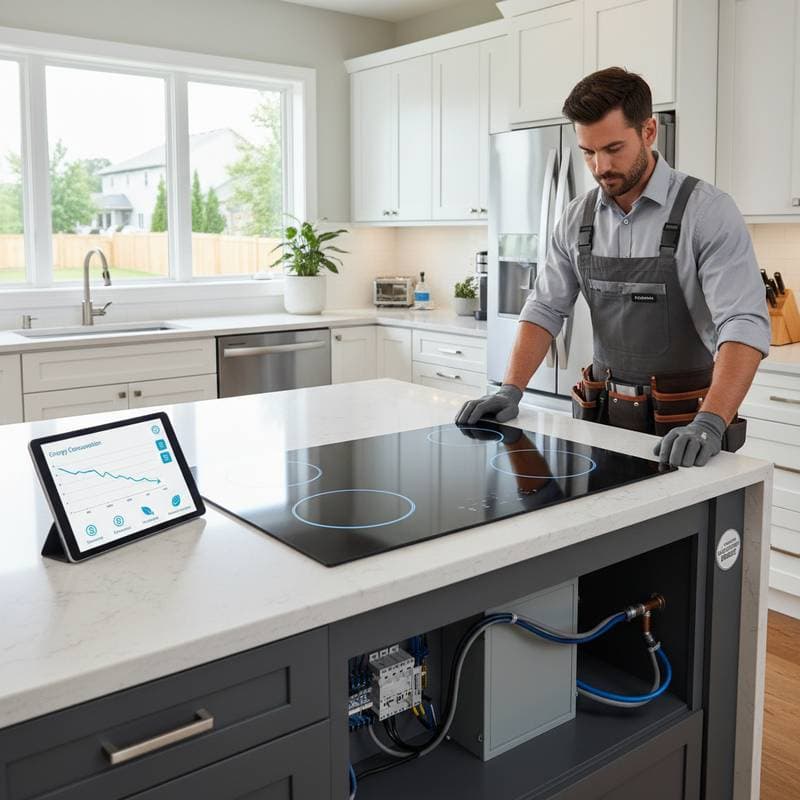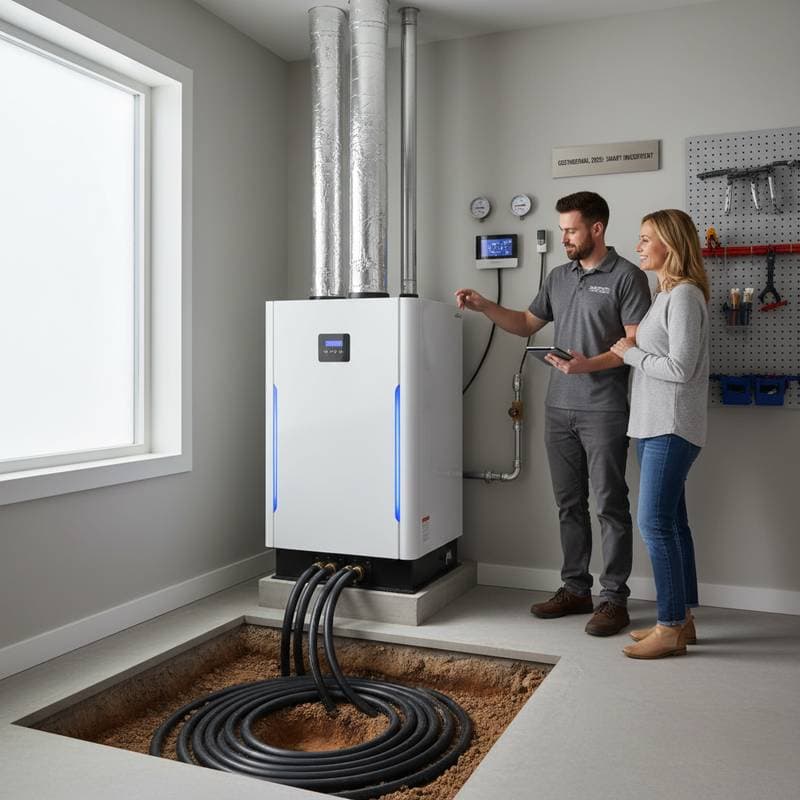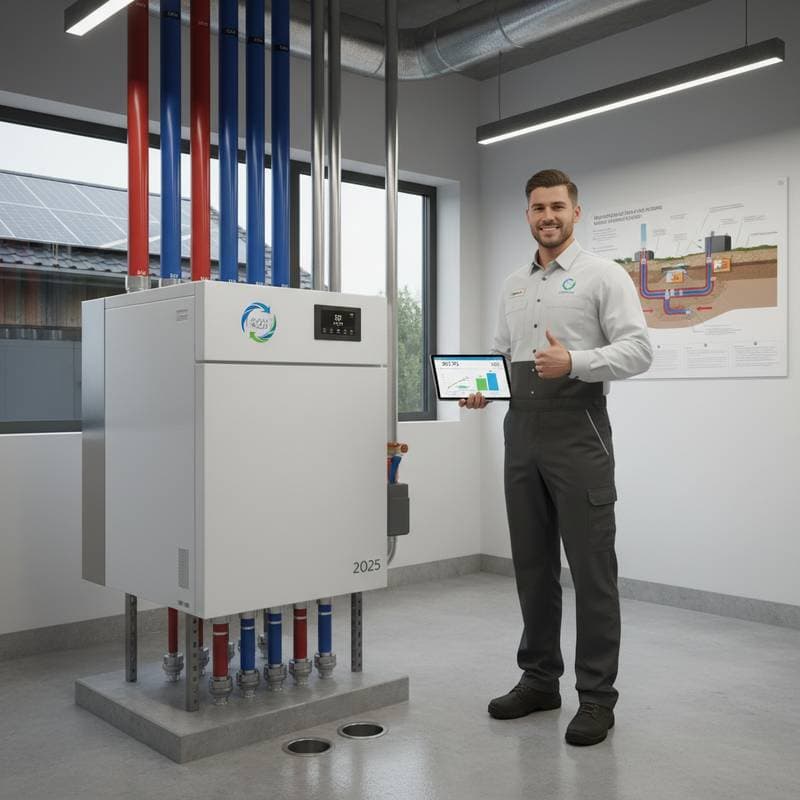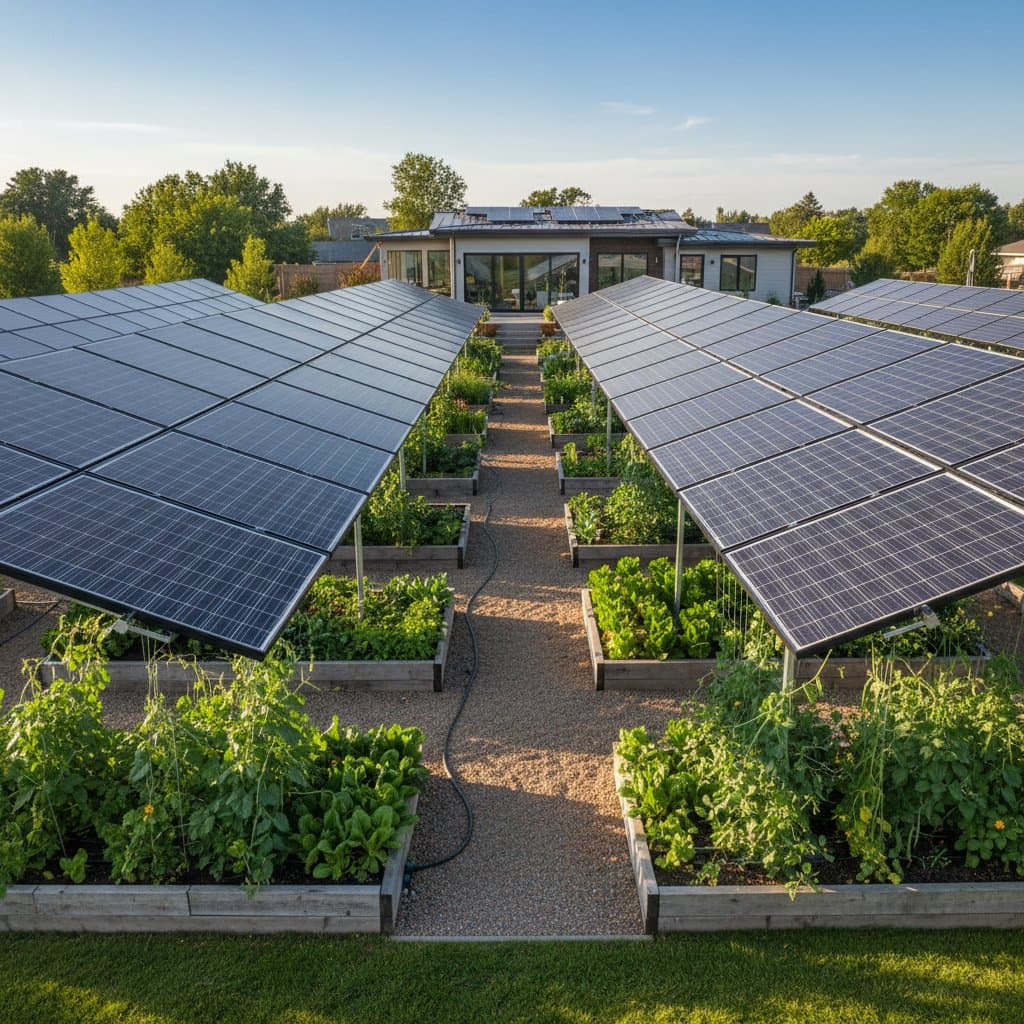Key Points
- Geothermal HVAC systems cut heating and cooling costs by 40 to 70 percent compared to conventional systems.
- Federal tax credits and rebates reduce upfront expenses and accelerate payback periods.
- These ground-source heat pumps offer high efficiency, long lifespan, and consistent comfort with minimal maintenance.
- In an era of fluctuating energy prices, homeowners seek dependable renewable solutions that increase property value.
- Professional design and installation ensure optimal performance and lasting returns.
Why Homeowners Are Reconsidering HVAC Choices
Imagine the first cold snap of winter. The furnace kicks on, the utility meter spins faster, and the tension between staying warm and controlling costs becomes all too real. Many regions experience rising energy rates and unpredictable fuel prices. Heightened environmental awareness now shapes these choices, weighing household budgets against planetary health.
This shift drives interest in geothermal heating and cooling systems. Though the technology has existed for decades, it receives fresh momentum from expanded federal incentives and proven long-term savings. Geothermal systems tap into the earth's stable underground temperatures to deliver efficient heating and cooling year-round.
Weighing Upfront Costs Against Long-Term Savings
Prospective buyers often start with questions about price. A standard residential geothermal HVAC installation costs between $15,000 and $35,000, varying by home size, soil conditions, and loop configuration.
Current federal tax credits cover 26 to 30 percent of the total cost, making the investment more accessible. These systems achieve up to 70 percent annual energy savings compared to electric resistance or propane options, often leading to payback within five to ten years. After that, savings continue for decades.
Investment Overview
- Installation cost: $15,000 to $35,000
- Tax credit reduction: 26 to 30 percent of total cost
- Annual energy savings: 40 to 70 percent
- System lifespan: 25 years for indoor components, over 50 years for ground loops
Geothermal represents a reliable long-term energy strategy. Traditional HVAC units typically decline in efficiency and require replacement after 15 years, while geothermal delivers steady benefits through lower operating costs and infrequent repairs.
How Geothermal Systems Work
A geothermal heat pump transfers heat between the home and the ground using buried pipes in either closed or open loops. The earth's consistent subsurface temperatures allow these systems to outperform air-source heat pumps and fossil fuel furnaces.
- In heating mode: The system draws warmth from the ground and delivers it indoors.
- In cooling mode: It removes heat from inside the home and releases it into the earth.
This transfer requires little electricity. For every unit of power consumed, the system generates three to four units of heating or cooling.
Environmental and Comfort Advantages
Owners of geothermal systems reduce their bills while significantly cutting greenhouse gas emissions. By relying on the earth's renewable energy, these setups minimize electricity demand and eliminate on-site fuel combustion.
The efficiency also translates to better comfort and indoor air quality. Steady operation avoids the temperature swings common in older systems. Without outdoor compressors, noise levels drop, creating a more peaceful home environment.
Additional Benefits
- Sheltered outdoor elements: Protection from weather and debris extends component life.
- Consistent humidity control: Improves living conditions across diverse climates.
- Zoning options: Allows customized temperatures in different rooms for targeted efficiency.
Incentives Accelerating Geothermal Adoption
Government programs speed the transition to renewables. Revitalized tax credits reshape the economics of geothermal installations. These credits apply to the full project cost, including equipment, excavation, and labor.
Unlike deductions, they provide direct reductions in tax liability. For a $30,000 installation, credits could return several thousand dollars, lowering the net expense. When combined with state rebates or utility incentives, the overall value often matches or exceeds that of conventional HVAC upgrades.
Trends and Growing Demand
Experts in the field report a surge in consultations. Volatile energy markets push homeowners toward predictable expenses and sustainable technologies that appeal to future buyers. Real estate professionals note that homes with geothermal systems command higher prices due to their efficiency and comfort features.
New construction projects routinely include geothermal from the start. Innovations such as horizontal trenching or narrow vertical drilling adapt to limited spaces. With more trained installers and financing options, geothermal extends beyond high-end homes to broader markets.
Installation Options by Budget
Entry-Level Replacement
- Setup: Horizontal closed-loop system
- Cost after credits: $12,000 to $18,000
- Annual savings: 40 to 50 percent on heating and cooling bills
This option suits homeowners replacing aging units in properties they plan to keep long-term.
Mid-Range Upgrade
- Setup: Vertical closed-loop system
- Cost after credits: $18,000 to $25,000
- Annual savings: 50 to 60 percent
Ideal for homes with limited yard space or higher energy needs, balancing performance and practicality.
Premium Integrated System
- Setup: Geothermal with domestic hot water support
- Cost after credits: $25,000 to $30,000
- Annual savings: 60 to 70 percent, including water heating
This configuration maximizes efficiency by handling both climate control and household hot water demands.
Ensuring Successful Installation
The best geothermal outcomes depend on thorough site assessment, soil analysis, and precise system sizing. Qualified professionals evaluate heat transfer properties, groundwater levels, and available space to determine the optimal loop type.
Oversized or undersized systems reduce efficiency, so accurate load calculations remain essential. Choose contractors certified by organizations such as the International Ground Source Heat Pump Association or manufacturer programs. Maintenance focuses on fluid levels, filters, and pressure checks, which prove simpler than those for traditional systems.
Common Homeowner Questions
Is my property suitable for geothermal?
Most sites accommodate these systems, with soil type and terrain influencing the design and cost.
What if I plan to sell soon?
Short-term owners benefit from increased home value and appeal to energy-savvy buyers.
Will it perform in extreme cold?
Yes, the stable temperatures deep in the ground ensure operation even in harsh winters.
Do I need backup heating?
Properly sized systems rarely require it, though supplemental options can address rare peak demands.
How disruptive is the installation?
Trenching for pipes occurs over a few days, after which the buried components remain invisible and require little attention.
Next Steps for Your Home
Begin with a professional energy audit to identify your current usage and potential savings. Consult a certified geothermal expert to explore configurations that fit your needs.
Consider your long-term plans. For extended occupancy, the ongoing efficiencies and low maintenance deliver unmatched value. If selling soon, the upgrade enhances marketability and supports sustainable living goals.
Geothermal HVAC not only stabilizes your energy costs but also contributes to a cooler planet, one home at a time.








